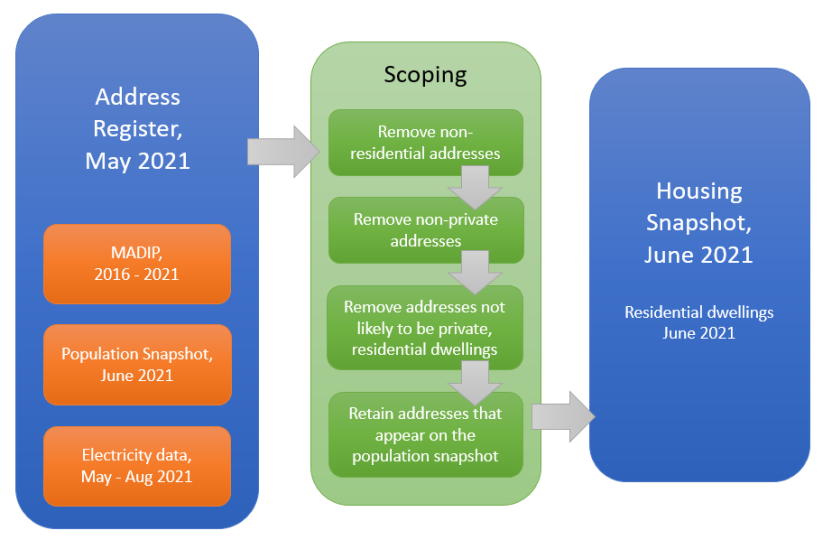The Administrative data snapshot of population and housing (ADS) is a new, experimental release of population and housing data built from administrative data sources.
Like the Census, the ADS provides a snapshot of Australian people and houses at a point in time but for a smaller and different set of person and housing characteristics.
The ADS is made up of two parts: a population snapshot dataset and a housing snapshot dataset. These datasets were first created to support the 2021 Census and are now being released as an integrated, stand-alone product.
The ADS has a reference date of 30 June 2021, which is close to Census night (10 August 2021). This enables the best comparison with Census data and official population and housing statistics.
This article explains the methodology used to create the housing part of the ADS, referred to as the ‘housing snapshot’. It shows:
- How the housing snapshot is created from administrative data sources
- How the housing snapshot compares to and differs from the Census and Estimated dwelling stock.
